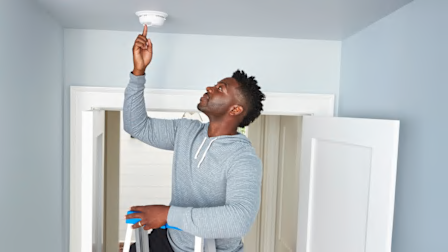DIY Security System Face-Off: Ring vs. SimpliSafe
Consumer Reports’ lab tests reveal which DIY security system is best at guarding your home
When you shop through retailer links on our site, we may earn affiliate commissions. 100% of the fees we collect are used to support our nonprofit mission. Learn more.

SimpliSafe was one of the original DIY home security upstarts, launching a system in 2009 that was wireless and that could be easily set up without a service technician. Now the company is far from alone.
Formidable companies including Google Nest, Samsung, and Honeywell Home have since flooded the market with their own DIY security systems. And one brand in particular has become a major opponent to SimpliSafe: Amazon-owned Ring.
To help you decide which system is better at securing your home, we’ve pitted the Ring Alarm 5-Piece Starter Kit, $200, against the SimpliSafe The Essentials starter kit, $270, in a CR face-off.
Vitals
Ring Alarm 5-Piece Kit: This Ring Alarm kit comes with a base station, keypad, motion sensor, one contact sensor for a door or window, and a range extender for increasing the wireless range of the base station in larger homes. The base station has a built-in siren, backup battery, and backup cellular connectivity (subscription required). You can monitor the system yourself from the Ring smartphone app without paying any monitoring fees. Professional monitoring and backup cellular connectivity are available through a Ring Protect Plus subscription, which costs $10 per month or $100 per year. Additional contact sensors and motion sensors cost $20 and $30, respectively.
SimpliSafe The Essentials Kit: The SimpliSafe kit comes with a base station, keypad, motion sensor, and three contact sensors for doors and windows. The base station has a built-in siren, backup battery, and backup cellular connectivity (subscription required). The SimpliSafe system requires a monitoring plan to receive alerts (without it, the alarm will still go off but you’ll have no way of knowing until you get home).
SimpliSafe offers two tiers of monitoring: The Standard plan at $15 per month and the Interactive plan at $25 per month. The Standard plan includes professional monitoring and cellular backup. The Interactive plan adds on smartphone control, app alerts, a rolling 30 days of cloud storage for security cameras, verification of alarms by checking security camera clips for intruders, and smart home integrations. Additional contact sensors and motion sensors cost $15 and $30, respectively.
Test By Test
Here’s the how the two systems perform in each of our lab tests:




















